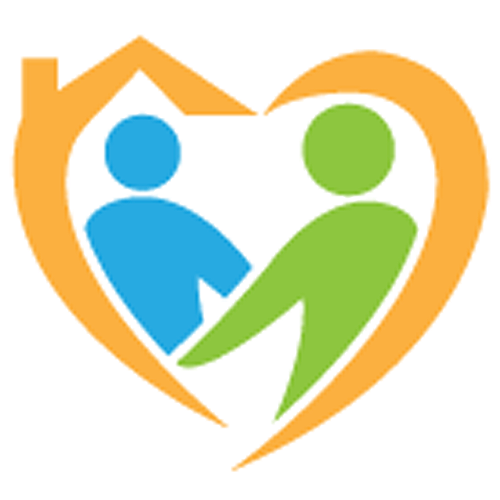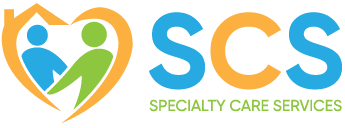Cancer In-Home Nursing and Care
Maryland, Washington, D.C., and Northern Virginia
24/7 Nurse Availability
Free In-Home Assessments
Over 25 Years of Experience
Hours:
Request Call Back
Hero Request Form
Thank you for contacting us.
We will get back to you as soon as possible.
Please try again later.
Compassionate Cancer Home Care for Clients and Families
Caring for a loved one with advanced cancer can be time-consuming, exhausting, and require specific medical skills. But it doesn’t have to fall on you alone!
Our Cancer In-Home Nursing & Care team brings hospital-level skill and warm, caring support right to your door.
Whether you’re living with cancer or organizing care for someone you love, this page is for you.
Who We Serve
We provide medical care and home support to those with Stage III–IV (advanced) cancer with complex needs– often older adults and seniors - who may:
- Feel weak or tired from chemotherapy, immunotherapy, radiation, or the cancer itself
- Need skilled nursing for symptom management (pain, breathlessness, nausea, dehydration, infection risk)
- Need medical assistance with medications, IVs, injections, ports, catheters, feeding tubes, PICC lines, oxygen, or wound care.
- Benefit from hands-on daily assistance (bathing, dressing, mobility, safe transfers, meal prep, hydration, toileting)
- Want fewer ER trips and hospital days by handling complications at home
- Prefer to remain at home for most of their care
Home health is common in cancer care. Studies show that about 29% of those with cancer utilize home nursing, with between 10–16% of older adults receiving home health within 3 months of diagnosis. [1]
Programs like ours that deliver home-based care have better outcomes than not utilizing care, including: [2] [3]
- Better health outcomes
- Fewer Emergency Department visits and hospitalizations
- Lower total costs
What Care We Provide
1) Complex Skilled In-home Nursing
- Pain control (including opioids), anti-emetics, bowel regimens, and effective plans to reduce negative symptoms
- Dyspnea/oxygen troubleshooting, nebulizers, and secretion management
- Hydration and nutrition support, meal prepping and cooking, and tube-feeding care
- Reducing infection risk: vitals, labs as ordered, catheter care, and rapid escalation pathways
- 24/7 support for questions and nurse triage
2) Treatment Support—At Home
- Device care for ports, PICCs, catheters, drains, ostomies, and wound management
- Chemotherapy side-effect monitoring (bleeding, clots, neuropathy, confusion, constipation/ileus) with early intervention strategies to reduce negative health outcomes
- Nutrition, exercise, sleep, and health support to speed recovery
- Medication management, reminders, and administration
3) Daily Living Assistance
- Safe mobility and transfers for those who can’t move/lift themselves
- Fall-prevention setup and bed-to-chair plans
- Personal care: bathing, grooming, toileting, continence care, housekeeping & laundry, shopping assistance, appointment companion, skin protection
4) Respite and Short-Term Care
- Respite hours (a few hours a week) so loved ones can rest, work, or step out
- Family coaching and reassurance: what to expect, when to call, how to prevent crises
- Care coordination across healthcare providers, specialists, DME vendors, pharmacies, and community resources
5) Palliative & Hospice Coordination (When Appropriate)
- Compassionate Transitions: If curative treatment is no longer the focus, we guide families through the process of transitioning to palliative or hospice care, ensuring dignity, comfort, and peace at home.
- Ongoing Support at Home: Even with hospice in place, our nurses and aides can continue assisting with personal care, symptom management, and emotional support for both client and family. Routine home care accounts for >98% of hospice days
Partners & Providers We Collaborate With and Recommend
We coordinate closely with:
- Oncologists and Oncology nurses
- Local cancer centers
- Primary Care providers
- Home infusion pharmacies
- Hospice centers – including the Montgomery County and Prince George’s County Hospice [https://montgomeryhospice.org/]
- DME suppliers
- Rehab therapists (physical therapy, occupational therapy, speech therapy)
- Nutritionists
- Social workers
- Insurance and benefits providers
What Areas We Serve — And Why
We provide care where cancer burden is high and home-care access can make the biggest difference, which includes Montgomery County MD, Prince George’s County MD, Howard County MD, Frederick County MD, Washington DC, Fairfax County VA, and Arlington County VA.
Here is an estimated list of the residents who are currently living with cancer in the areas we serve dispersed across stages 1-4: [4] [5] [6]
- Bullet text
- Bullet text
- Bullet text
- Bullet text
- Bullet text
- Bullet text
- Bullet text
- Bullet text
- Bullet text
- Bullet text
| County / Jurisdiction | Total | Stage 1 | Stage 2 | Stage 3 | Stage 4 |
|---|---|---|---|---|---|
| Montgomery County, MD | 58,440 | 24,480 | 16,320 | 14,970 | 2,680 |
| Prince George?s County, MD | 52,200 | 21,860 | 14,570 | 13,370 | 2,390 |
| Howard County, MD | 18,340 | 7,680 | 5,120 | 4,700 | 840 |
| Frederick County, MD | 16,160 | 6,770 | 4,510 | 4,140 | 740 |
| Washington, DC | 37,920 | 15,880 | 10,590 | 9,720 | 1,740 |
| Fairfax County, VA | 62,690 | 26,260 | 17,500 | 16,060 | 2,870 |
| Arlington County, VA | 12,950 | 5,420 | 3,620 | 3,320 | 590 |
Across our footprint, about 258,700 neighbors are living with some form of cancer. Roughly 78,130 are estimated to be Stage 3–4, where consistent nursing and caregiver support at home can be especially helpful.
Strong home-based support helps families manage symptoms earlier and avoid many emergencies. Nationally, cancer care often leans on hospitals and ERs: around 44% of people with cancer visit an Emergency Department within a year of diagnosis, and roughly two-thirds of cancer-related Emergency Department visits lead to hospitalization. [7] [8]
Why Choose In-Home Care vs. Facility Hospice Care
- Comfort & Positivity in Home: Most people want to remain in their own familiar environment, surrounded by personal belongings, routines, and loved ones — not in a facility room.
- Family Visiting & Involvement: At home, spouses, children, and friends can visit freely, participate in care, and share more meaningful time without visiting restrictions.
- Personalized Attention: In-home nursing ensures one-on-one support, with care plans tailored to your loved one’s unique medical needs and preferences.
- Reduced Stress & Transitions: Staying at home eliminates the emotional and physical strain of relocating to a facility during a vulnerable time.
- Quality of Life Focus: With pain and symptom management provided at home, clients often experience greater peace, dignity, and control.
How It Works - Step-by-Step
1. RN Comprehensive Assessment (Day 1)
- Review diagnoses, treatment plan, meds, allergies, vitals, labs (if available), devices/lines, home safety, fall risks, caregiver capacity, and goals of care.
- Rapid start symptom plan (pain, dyspnea, nausea, constipation), with “when to call” thresholds to avoid ED trips.
2. We Design Your Personalized Care Plan
- Clinical: skilled nursing schedule, port/PICC care, dressing changes, hydration plan, med management, monitoring schedule.
- Daily living: caregiver/CNA hours for bathing, meals, mobility, toileting, housekeeping.
- Care transitions: hospital-to-home checklists, infusion and imaging logistics, hospice readiness when appropriate.
3. We Deliver Care
- Nursing visits for assessments, meds/IVs, wound/line care, symptom titration, and teaching.
- Caregiver shifts for ADLs/iADLs, exercise/walks, hydration prompts, and companionship.
- Care coordination with oncology, palliative, DME, and community supports; appointment companions as needed.
4. Flexible Scheduling
5. Ongoing Re-assessment & Physician/Provider Updates
- RN/NP case review weekly (or more often for high-acuity clients).
- 24/7 phone support; same-day urgent nurse visits when clinically indicated.
- Data-informed adjustments: we track symptoms and vital-sign patterns to pre-empt crises.
- Progress reports, healing measurements, and plan tweaks emailed to PCPs, oncologists, and other providers
6. Graduation or Transition Care
- If you’re healed or consistently healing and showing significant improvement, we can wrap up care.
- If care needs change, we coordinate a smooth transition—to hospice, hospital, or another setting—so you’re supported every step of the way.
How Cancer Home Care Clients Find Us
Many of our clients find us by searching for these terms:
- Core service: cancer in-home nursing care; at-home cancer nursing services; home-based cancer care nursing; cancer home care nursing
- Service type: palliative cancer home care; oncology home nursing; in-home cancer symptom management; skilled nursing for cancer clients at home
- Provider language: cancer home care providers; in-home oncology nurses; home cancer care agency; at-home nursing provider for cancer care
- Transactional: hire a cancer home nurse; schedule cancer home care; order home cancer care services
Sources
1. PubMed Central (NIH/NLM).
https://pmc.ncbi.nlm.nih.gov/articles/PMC7225660/
Accessed August 2025.
2. PubMed (NIH/NLM).
https://pubmed.ncbi.nlm.nih.gov/17608870/
Accessed August 2025.
3. Better Care Playbook.
https://bettercareplaybook.org/resources/effect-home-based-palliative-care-program-healthcare-use-and-costs
Accessed August 2025.
4. Montgomery Hospice & Prince George’s Hospice.
https://montgomeryhospice.org/
Accessed August 2025.
5. Centers for Disease Control and Prevention (USCS Technical Notes: Stage at Diagnosis).
https://www.cdc.gov/united-states-cancer-statistics/technical-notes/stage-at-diagnosis.html
Accessed August 2025.
6. SEER (NCI) – Summary Stage 2018 Manual (PDF).
https://seer.cancer.gov/tools/ssm/2018-Summary-Stage-Manual.pdf
Accessed August 2025.
7. National Cancer Institute – Office of Cancer Survivorship.
https://cancercontrol.cancer.gov/ocs/statistics
Accessed August 2025.
8. MDedge (Journal of Community and Supportive Oncology).
https://mdedge.com/jcso/article/137152/practice-management/emergency-department-use-recently-diagnosed-cancer-patients
Accessed August 2025.
9. JAMA Network Open.
https://jamanetwork.com/journals/jamanetworkopen/fullarticle/2728627
Accessed August 2025.
What’s the difference between oncology-based home nursing and non-medical personal care/aide services?
Oncology home nursing is medical care provided by licensed nurses, such as medication administration, pain management, wound care, and monitoring treatment side effects. Non-medical personal care focuses on daily living help like bathing, grooming, meal preparation, and companionship. Many of our clients use both services together for complete support.
Can chemotherapy or immunotherapy be given at home?
No, these are treatments that must be done at a designated clinic. We can recommend local clinics for your treatments based on your specific health conditions and needs. Our in-home nursing and services provide all other forms of treatment and care for those with cancer.
How do your in-home nurses handle infection control during treatment at home?
Our nurses follow hospital-level protocols, including sterilizations, protective equipment, hand hygiene, and safe disposal of medical supplies, to protect both clients and caregivers.
Do you offer 24/7 in-home cancer care for clients who need continuous support?
Yes. Around-the-clock nursing and aide support is available, including overnight and respite care.
Do you provide bilingual caregivers or interpreter access?
Yes. Contact us to see if we have a caregiver in your area that speaks your language.
Can your home cancer care agency provide transportation and appointment escort for chemotherapy or radiation visits?
Yes. We can arrange transportation and caregiver accompaniment for medical appointments and treatments.

CP #1 Headline
CP #1 Body
CP #1 CTA Lead-in
Not valid with any other offers or promotions. Restrictions apply.
Must mention this coupon at the time of scheduling.
Reviews



